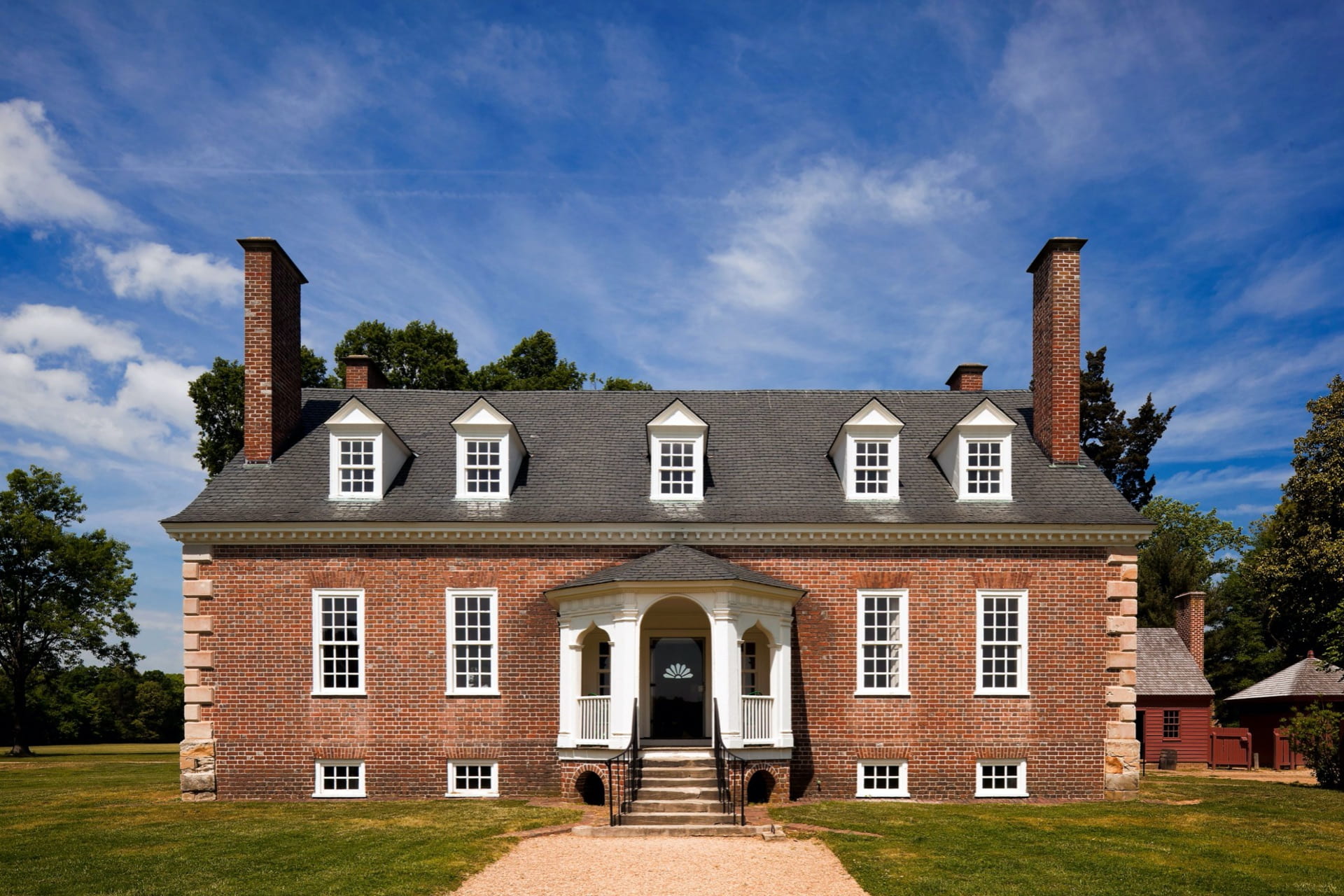Gunston Hall: Implementing Accessibility in a Historic House Museum
By Emily Bach, ’22
During this summer’s Southern Field Study Trip, the Winterthur fellows visited a variety of historic house museums and learned about their different approaches to interpretation and historic preservation. While climbing up steep staircases, navigating narrow hallways, and crossing expansive tracts of lands, the issue of accessibility frequently popped into my mind. As is to be expected of structures built in the eighteenth and nineteenth centuries, the historic houses from our trip were not originally constructed to accommodate people with disabilities and special needs. Therefore, visiting these structures and engaging in conversations with staff members provided wonderful opportunities to learn about accessibility in museums. George Mason’s Gunston Hall in Lorton, Virginia particularly stood out with its proactive and creative efforts to promote accessibility.
Historic sites are granted some flexibility when retrofitting structures to be more accessible, but they are still required to accommodate for people with cognitive, sensory, and mobility impairments to their maximum capacity. Regulations and expectations are listed in detail within the Americans with Disabilities Act, a piece of legislation that prohibits the discrimination against people with disabilities. An obstacle outlined in ADA standards that is often seen in historic houses is the presence of stairs and narrow doorways that create physical barriers. At Gunston Hall, it was not until our tour guide pointed out the house’s integrated lift on its east side that I even noticed its existence. It maintains the façade’s symmetry by staying hidden and ensures access to the house’s first floor without having to use stairs.
What impressed me most at Gunston Hall was the conscientious design of the grounds. When entering one of house’s back parlors, a visitor’s attention turns to the picturesque Riverside Garden and its broad cobblestone pathways that are visible through the rear windows. Visitors are encouraged to enjoy these gardens, but the unsteady nature of cobblestone paths often isolates those with mobility issues. Because the gardens are meant to be experienced by all, Gunston Hall staff poured resin onto the stones to create a solid surface. This both maintains the garden’s historic design and promotes universal design, a practice in which environments are composed to meet the needs of as many people as possible, regardless of age, ability or disability, or size.
As the Centre for Excellence in Universal Design states, “universal design is good design.”1 By incorporating designs and features that people of varying abilities can use, museums welcome even more visitors. Gunston Hall’s resin-covered pathways, for example, are beneficial to all: young children who might otherwise fall on loose rocks, wheelchair users, or tired visitors who do not wish to wear themselves out even more by walking on uneven terrain can all appreciate the grounds at Gunston Hall. Visiting Gunston Hall and learning how we can make museums even more accessible was an absolute highlight of this summer’s southern trip.
Further Resources on Historic Buildings and Accessibility:
ADA Standards Index: https://www.ada.gov/2010ADAstandards_index.htm
ADA Accessibility Guidelines: https://www.access-board.gov/adaag-1991-2002.html
Centre for Excellence in Universal Design: http://universaldesign.ie/What-is-Universal-Design/
Provide Accessibility for Historic Buildings: https://www.wbdg.org/design-objectives/historic-preservation/provide-accessibility-historic-buildings
- “What is Universal Design,” Centre for Excellence in Universal Design, National Disability Authority, http://universaldesign.ie/What-is-Universal-Design/ ↩



Leave a Reply